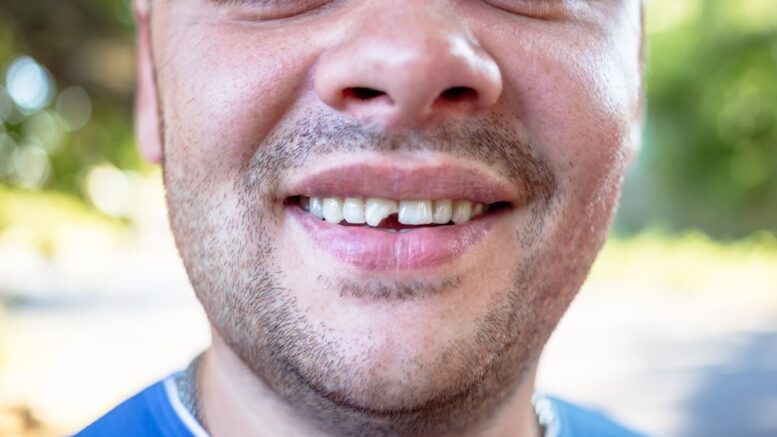Tooth fracture, also known as cracked tooth syndrome, is a common dental issue among older people and children. In many cases, it’s minor and harmless. However, if neglected, it may become more complicated and affect the entire teeth or worsen into a complex dental problem. When this happens, consulting a dentist may be necessary. That means it is high time to contact the dentist near me midtown manhattan before things get out of hand.
Suppose you suspect that you have a fractured tooth. In that case, you may need to know its symptoms and appropriate treatment options. It will help prevent your fractured tooth from worsening, thus keeping your teeth healthy. However, it’s still best to consult your dentist to diagnose your dental problem properly. For that purpose, here’s an article to guide you. So, read on!
Symptoms
A cracked tooth doesn’t always show symptoms, especially if the cracks are super-small and unnoticeable. Some symptoms may also be subtle if the damage starts below the gum line. Because of this, you may need to be observant of these signs. You may also need to manually check your tooth in the mirror and consult your dentist regularly or check dental websites, such as Durangodmd.com and others, to have more ideas.
To know more about the early signs and symptoms, dive into the following points:
Increased Sensitivity
Sensitive teeth are common. Yet, when an insensitive tooth starts to become sensitive, the possibility of a cracked tooth is high. People with fractured teeth often experience this when they bite into or drink hot, cold, and sweet food. They may also feel increased sensitivity when eating sour or sticky food. Some of the food that triggers this condition are ice cream, soda, hot coffee, hard candies and nuts, and citrus fruits.
If you’re experiencing this, there’s a high chance that you have a fractured tooth. So, it’s best to consult your dentist for an early medication and avoid prolonged discomfort.
Pain When Chewing Or Biting
Pain when eating may indicate that a person has a fractured tooth, especially if the damage reaches the pulp and below the gum line. The pain is evident when a person bites hard or sticky food in many cases.
It all depends on the severity of the condition and the area of the affected part. Some teeth may even be painful, even if they don’t show signs of cracks. Some cracked teeth may not even cause even the slightest pain.
Usually, the pain caused by a cracked tooth is irregular. It may be persistent or come and go suddenly. The pain may be hard to notice in some cases, especially if you’re biting with the unaffected tooth. Sometimes, the pain is constant and may be difficult to bear. It may even lead to chronic pain that needs medication or a dental visit.
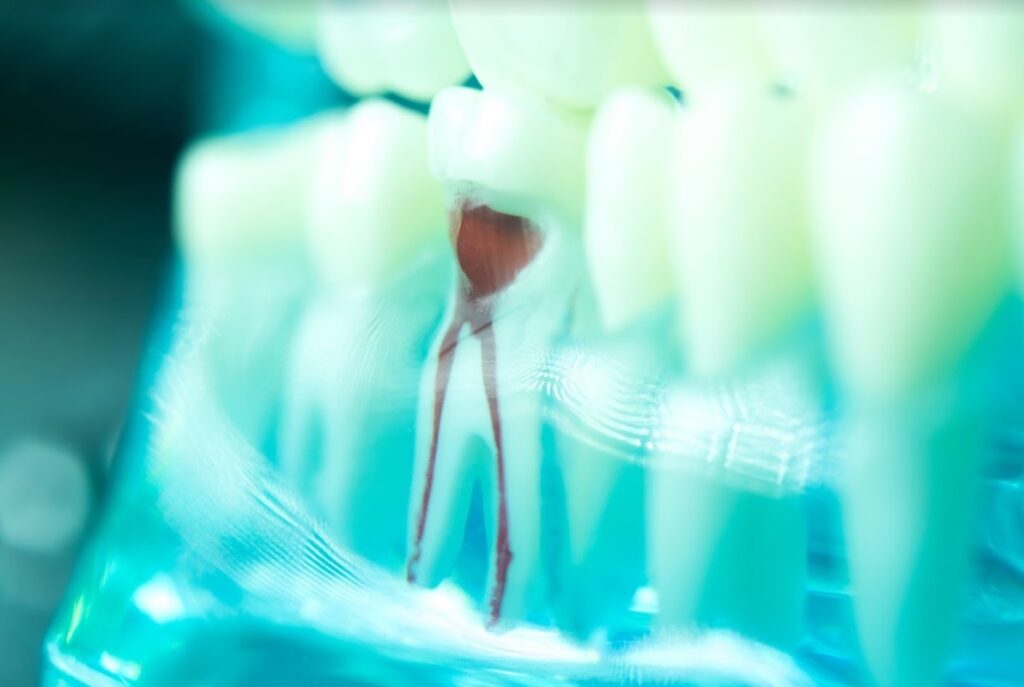
Gum And Tooth Infection
A cracked tooth that has worsened may lead to infection. It causes small bumps to appear in the gum line in many cases. It may also produce persistent throbbing pain. In some cases, they appear at the base of or near the fractured tooth.
Some infections may cause abscesses and even cavities. It also causes pain that reaches the jawbone, ear, and neck. In addition, tooth and gum infections may cause fever, chills, and swelling in the neck area. It also causes gum swelling that may be too sensitive to touch and temperature changes.
Feeling Of Loose Tooth
Sometimes, people with fractured teeth feel like a tooth or two shifts when they talk or eat. It happens when the affected tooth has split or has started to break up its crown. If you experience this symptom, you may consider looking into your tooth in a mirror and consulting a dentist. Ignoring it may lead to an abrupt worsening of the condition and eventual extraction.
Swollen Lymph Nodes
Swollen lymph nodes indicate infection. If you feel that your tooth is fine and you have no other health issues, it may be advisable to check your tooth or go to a dentist. You’ll know whether you’re having an infected fractured tooth that causes your lymph nodes to swell.
Visible Signs
Apart from the symptoms felt, such as painful gum throbbing or split crown, a fractured tooth may also show physical signs. These may include eroded enamel, a visible hole in any part of the tooth, and signs of decay, such as tooth discoloration.
Types Of Cracked Teeth
Before delving into the symptoms that identify a cracked tooth, you may need to read first its various types, including:
Hairline Cracks
These refer to tiny cracks in the outer enamel of a tooth. Typically, they aren’t painful.
Vertical Cracks
These cracks run from the tooth’s biting surface to the gum line. They’re savable as long as the damage doesn’t reach the pulp.
Fractured Cusp
It typically happens around a dental filling. It doesn’t reach the pulp most of the time, so it doesn’t cause any pain.
Split Tooth
This tooth’s crack runs from the biting surface to the gum line. It has significant damage characterized by the splitting of the tooth. The tooth can no longer be saved in most cases and is typically painful.
Vertical Root Fracture
This crack starts below the gum line and goes upward. The damage starts from within in most cases, so it doesn’t show any symptoms until the crack surfaces.
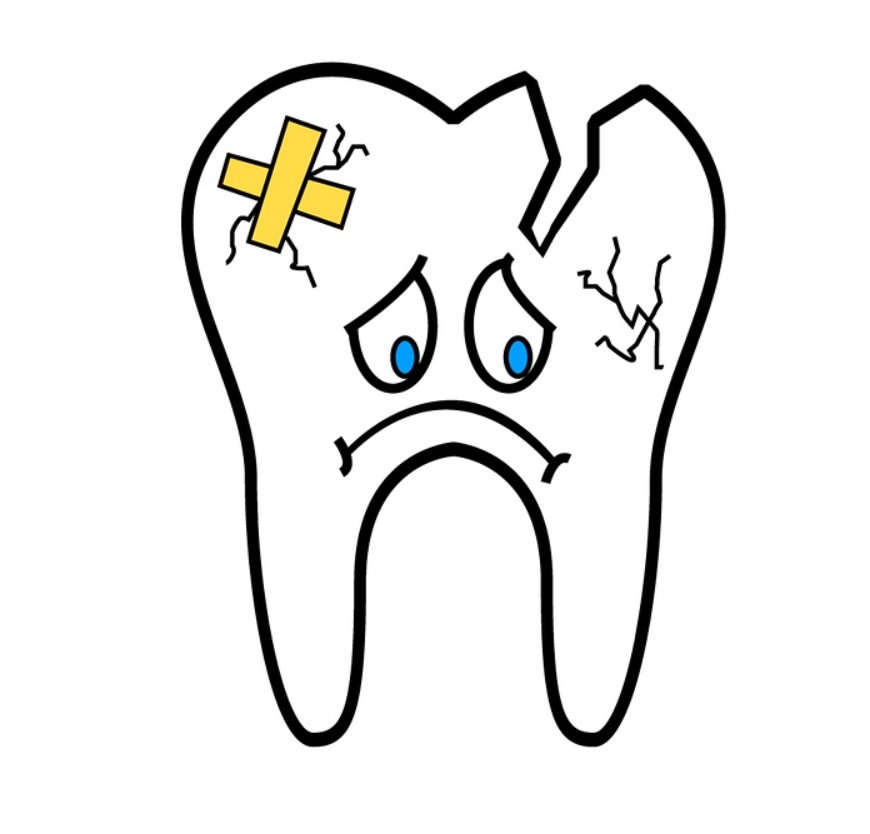
Causes
After knowing the signs, symptoms, and types of fractured teeth, you may consider understanding the different causes of a cracked tooth. This way, you get to avoid them to prevent having fractured teeth. Here are some of them:
Physical Trauma
Whether you’ve been into a fistfight, a sports-related injury, fall, or car accident, your teeth may receive damage that may cause fractured teeth. In some cases, your front teeth are the most prone to these incidents and may have cracks.
To avoid trauma in sports, you may need to wear protective clothing and support, such as mouthpieces and headgear. You may only need to be extra careful when driving your car or avoid physical confrontations in other situations.
Abrupt Temperature Changes
Sudden temperature changes often cause stress to the junction between the teeth and enamel. It creates a thermal shock that may start teeth cracking when this happens repeatedly.
Age
As you grow older, your pulp becomes smaller. As a result, its blood vessels and nerve tissues become fewer. It makes your teeth more brittle and susceptible to chipping and splitting, even if not exposed to stress and trauma. Typically, a person’s teeth start to weaken when he reaches the age of 50.
Ill-Fitting Fillings
Dental fillings that don’t fit well may cause fractures in your teeth. To avoid this, you may need to ensure that your filling perfectly suits your teeth right from measuring and fitting. If they feel too tight in the long run, have them removed at once.
Biting Or Chewing Hard Food
In some cases, your teeth can’t stand the pressure and stress caused by biting hard food. This issue is doubled when your teeth already have existing cracks. To prevent this from stressing you out, you may need to know what food to bite and chew.

Tooth Decay
Tooth decay weakens your teeth. In the initial decay phase, your teeth may have minor cracks since the enamel and dentin become more brittle. If not addressed accordingly, the decay may complicate further and worsen your teeth cracking. It may lead to splitting or even sudden tooth eruption.
Deteriorating Seal Between Dental Crowns And Fillings
Inlays, Onlays, and other fillings may deteriorate over time. As a result, the teeth where these fillings are cemented become brittle and may crack. To avoid this, you may need to know that fillings usually last 10 to 15 years after placement.
If your fillings are getting closer to this timeline, you may consider replacing them, especially if they show early signs of natural wear and tear.
Teeth Grinding
Teeth grinding can be a habit formed unconsciously. In some cases, it’s a state called bruxism—a condition where people involuntarily clench, grind, and gnash their teeth, even if they’re sleeping. Some causes of this condition are stress, anxiety, and intake of certain medications, including antidepressants.
Treatment Options
To treat fractured teeth and similar dental conditions, you may consider the following options:
Teeth Bonding
This dental procedure uses a tooth-colored resin to repair cracks in one’s teeth. Typically, it fills in the fracture and treats the gaps. Aside from this, teeth bonding also changes the tooth’s shape and color.
If you’re looking for a way to conceal a minor crack in your teeth, this could be your procedure. It may also be the appropriate treatment if you have existing tooth problems, such as discoloration and gaps.
Dental Crown
This process aims to cover the fracture with the filling. Doing such prevents the widening and deepening of the crack or gap. In addition, the dental crown stops acids from getting into the damaged tooth, thus slowing the decay and worsening the condition.
Veneer
Like teeth bonding, dental veneer application uses a special resin, such as porcelain or plastic adhesive, to restore small and large chips. Many dentists suggest treating a fractured tooth caused by physical trauma, such as blows. Its application is carried out during a single appointment in many cases. It also strengthens the original part of the cracked tooth.
Cosmetic Contouring
Also known as enameloplasty and odontoplasty, this dental cosmetic procedure removes some minor portions of the tooth enamel by rough-edged rounding and polishing. The term ‘contouring’ comes after shaping the tooth to address the cracks and chips.
Root Canal Treatment
The root canal procedure becomes necessary if the fracture has extended to the pulp chamber. It may include the removal of the inflamed pulp and the application of dental filling to seal the space. In this process, the dentist cleans and disinfects the surfaces inside the tooth.
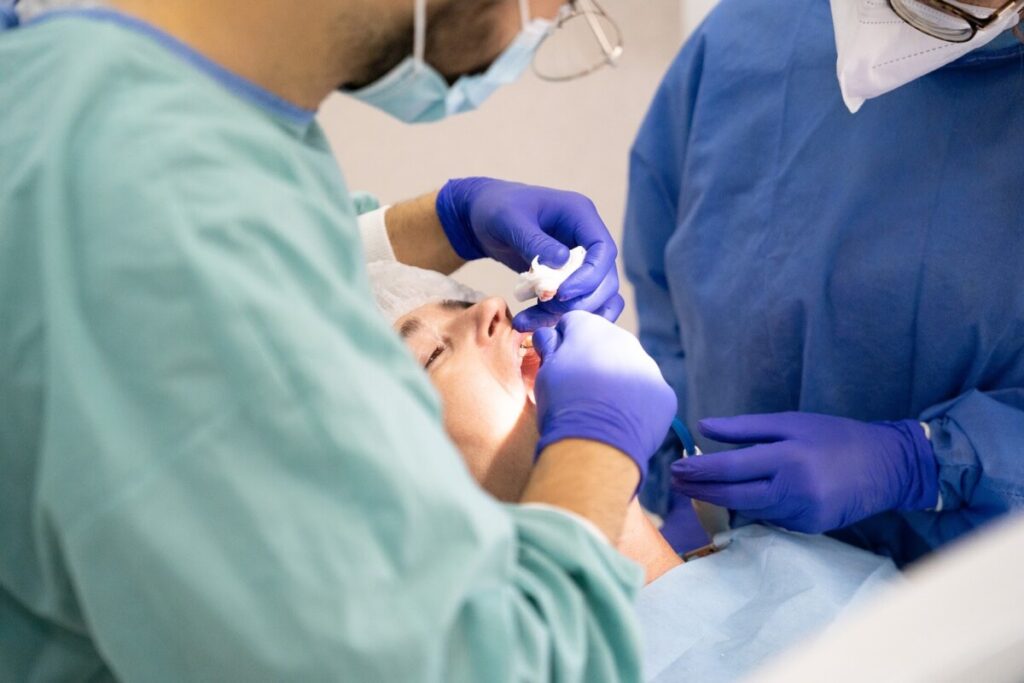
Root canal treatment aims to save the healthy part of the cracked tooth and eliminate the infected portions to prevent microbial invasion and the spread of the damage. Many dentists suggest this treatment option if the patient experiences increased sensitivity over time.
Tooth Extraction
Tooth extraction is one of the traditional ways to remove a cracked tooth. In this option, the damaged tooth is completely removed. This procedure applies when the damage has started from below the gum line or has reached the pulp chamber. In addition, if the tooth already has significant damage and no longer has structural integrity, extraction may be the most appropriate option.
Types of tooth extraction
Typically, tooth extraction is categorized into three types, including:
Simple
It refers to basic tooth removal without the need to access the internal part of the tooth. In this process, most of the tooth’s parts have already erupted and may only require significant tweaking and pulling out.
Impacted Tooth
It is most common in the removal of wisdom teeth. It is appropriate for situations where the tooth isn’t yet erupted and is challenging to pull out. It typically requires oral surgery.
Root Removal
This process refers to removing residual tooth roots left from previous tooth extractions. To avoid painful extraction, proper anesthesia is applied to numb the affected area.
To ensure that your tooth extraction is taken care of well, you may need to do the following aftercare tips:
- Rinse the area with mouthwash two to three times a day.
- Take all medications as prescribed.
- Refrain from strenuous activity for the next 72 hours after the extraction.
In some cases, many people have hairline cracks in their enamel. If these dental problems don’t affect their looks and don’t cause any pain, dentists often suggest leaving them as is. Yet, you may always refer to the signs and symptoms to know the subtle indications of a cracked tooth that may worsen.
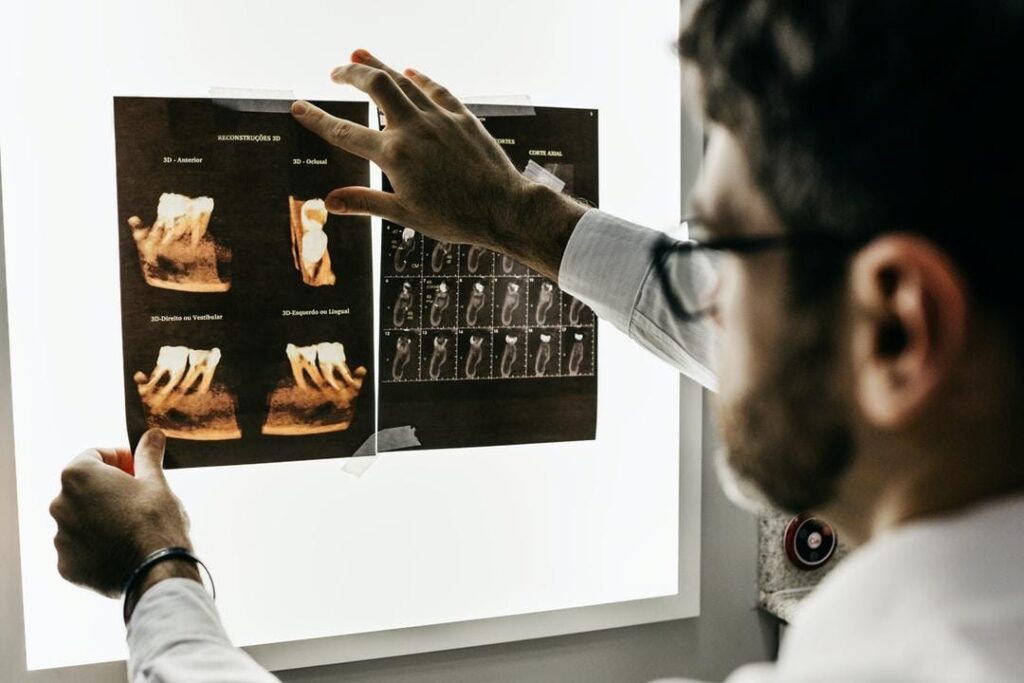
Wrapping Up
A fractured tooth is one of the most common dental issues one may suffer from, regardless of age and gender. While some cases may be safe to ignore, checking them regularly is advisable to avoid worsening conditions. Suppose you suspect that one of your teeth has cracked. In that case, you may need to read this article to know the symptoms and possible treatment options for a fractured tooth.
Aside from this, you may also consider knowing the causes and preventive actions to keep your teeth healthy and ways from fractures and similar dental issues. For that purpose, you may also visit your dentist regularly. You may also think about reading blogs or watching videos about proper dental hygiene and practices.
